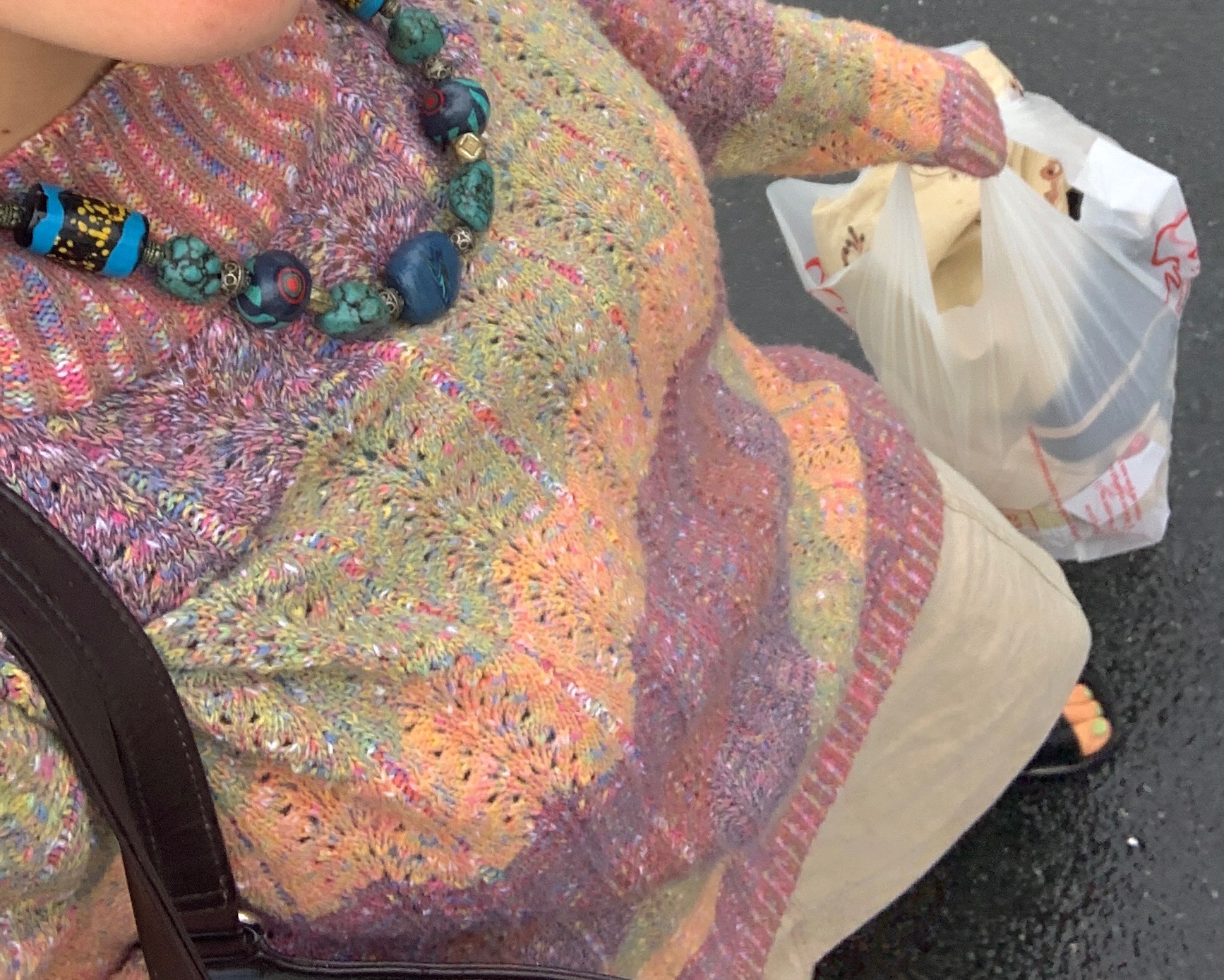my charity shop dilemma: when slow fashion starts to speed up
I’m not a danger (to the environment) but my wallet begs to differ.
My claim that I haven’t bought a first-hand piece of clothing in years is one that I will often share. It's a bonding thing between the complimenter and the complimentee. My response to compliments on pieces of clothing are ‘Vinted!’ ‘eBay!’ ‘Charity Shop!?’ with a laugh at the price and a struck-up conversation of how charity shops have ‘hidden gems,’ and the beauty of being thrifty.
But what originally started as a way to save money, have a more individual wardrobe, and slow down my fashion consumption, has recently become a bit of a retail addiction.
Moving down south, the charity shops are gold mines. In Totnes, I could’ve bought everything; vintage watches, jackets, chunky rings, handbags, flowy tops and skirts in muted, sun-bleached, earthy colours that only people in Cornwall and Devon seem to make look stunning. In the town where I live, every other shop – no exaggeration – is a charity shop. What used to be a ‘pop in and see if they have anything I like, sift through and have a wonder’ has become an ‘if I walk through the door of this shop, I am committing to spending anything between six and fifteen pounds.’
Has the range of charity shops shifted, or have my tastes adjusted to being completely aligned with what people are donating? Either way, I cannot stop shopping.

Having a sewing machine makes matters worse – not even sizing can deter me – I’ll just take it in/up/out.
In contrast, many people are slowing down their fast fashion. A capsule wardrobe of items in basic colours and styles from a shop like Zara that can be worn repeatedly is becoming popular.
But my slow fashion is speeding up. Of course, I still value my clothes. I have items that I’ve owned for years that I will never part with, and if I fall out of love with something, back on Vinted or to the charity shop it goes. But it isn’t sending a good message to the dopamine receptors in my brain that deal with shopping and spending money.
Does it matter though? The money is going to charity and the clothes aren't going into landfill. Perhaps finding problems in slow fashion is the kind of navel-gazing that ignores the root of the issue and blames the consumer for just trying to do their best?
Either way - I actually can't step foot in a charity shop for the foreseeable.
There's an urgency in thrifting that fuels consumption and doesn't give you time to be mindful about your purchases. This is training my brain to buy things immediately.
This has never been something that I’ve struggled with. I am (was) pretty frugal and bought my own clothes with pocket money from pretty early on. I would borrow a dress from a friend for a party rather than buy a new one off PrettyLittleThing's '5 and below', re-wear outfits, and to be honest, not really have a wardrobe I loved – but this was fine.
Then, the percentage of my income that charity-shop items cost makes me more blasé with my buying. Earning £5 a morning babysitting means an item will cost me an early morning and trying to get a 4-year-old to school, but on a salary, £5 on a jacket or pair of shoes seems an amount of money stupid not to spend. As my friend said to me when we were shopping on our lunch break 'You bought your lunch today so think of it as the meal deal you didn't get' - not the encouragement I needed.
This is also another appeal of thrifting. It's social. It's like an adult version of a treasure hunt. The satisfaction, the task, and the 'day-out-ness' of charity shopping make the buying seem justified.
Shopping second-hand has become such a habit for me that buying from stores does not even occur to me anymore. Want a pair of docs for work? Someone will have given up on the waring-in process and be selling them on eBay. Need gym gear? Someone won’t have done their return in time, and they’ll be on vinted. Want a maxiskirt or a vest top or anything Y2K? Charity shop.
But the issue with popping into a Cancer Research or British Heart Foundation is that you are confronted with items you didn’t know you needed but now are must-haves. Here is the charity shop paradox that I find myself in.
Fast fashion is the purchasing of many few-use items at low cost to keep up with fashion trends and fickle impulses of style and taste. But one advantage that makes it slower than thrifting is its abundance. You can sit with an item in your basket for weeks deciding if you really need it, waiting for a sale, or waiting for the need for it to dissipate. With charity shopping, you don’t have this luxury. It will be gone the next time you go in. On Vinted or eBay, someone else will buy it: there is no time to debate its necessity
Post a comment